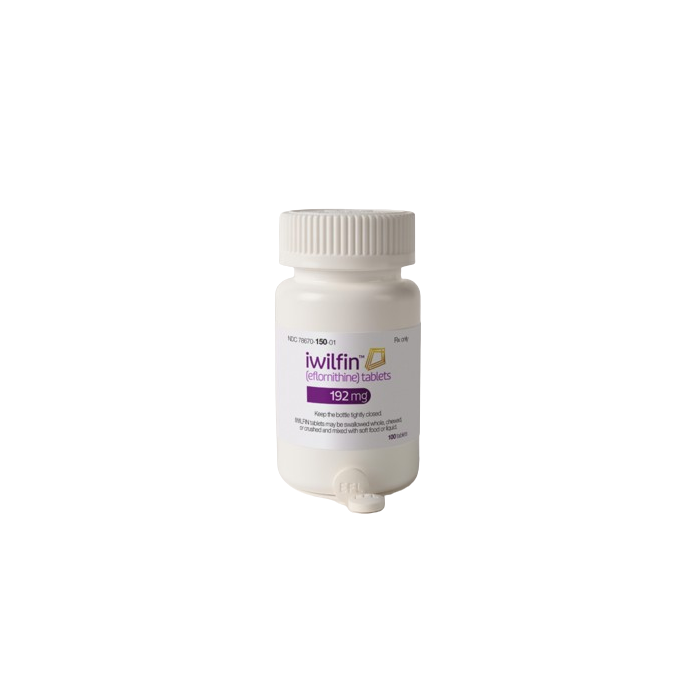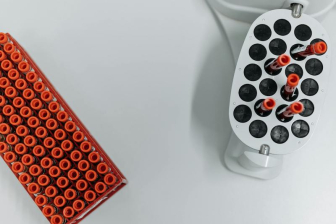Eflornithine for neuroblastoma: EMA approval timelines and how to avoid waiting
Last updated: 02 April 2024

You can legally access new medicines, even if they are not approved in your country.
Learn howNeuroblastoma is a very rare condition that mostly affects children under the age of five. About half of the diagnosed patients are classified as having high-risk disease. Of those, 50-60% are likely to relapse 1.
In this context, the FDA's recent approval of Iwilfin (eflornithine) has been a positive development. The medicine aims to reduce the risk of relapse in both adults and children with high-risk neuroblastoma.
However, at the moment, Iwilfin (eflornithine) is only approved in the USA. What does this mean for patients in Europe and the UK? Here's everything you need to know about Iwilfin's EMA approval timelines and your options to safely get the medicine before it's locally available.
What is Iwiflin (eflornithine) used for?
Iwilfin (eflornithine) is approved for use in adults and children with high-risk neuroblastoma who have shown some response to previous treatments, including anti-GD2 immunotherapy.
Iwilfin is an ornithine decarboxylase inhibitor. It blocks the activity of an enzyme called ornithine decarboxylase (ODC). ODC plays a role in producing polyamines, which are required for cells to grow. By blocking ODC's activity, Iwilfin aims to prevent neuroblastoma cells from growing and multiplying 3.
What is eflornithine's success rate in neuroblastoma?
Iwilfin was approved by the FDA on the basis of Study 3b and Study ANBL0032. Based on these two clinical trials, this is what we know about eflornithine's success rate in neuroblastoma:
- The hazard ratio for event-free survival (EFS) was 0.48, meaning that the group receiving the treatment had a 52% lower risk of experiencing an event (i.e. disease progression, relapse, secondary cancer, or death) compared to the group not receiving the treatment;
- The hazard ratio for overall survival (OS) was 0.32, meaning that the group receiving the treatment had a 68% lower risk of death from any cause compared to the group not receiving the treatment 4.
Based on these results, eflornithine appears to reduce the risk of relapse in patients with high-risk neuroblastoma.
Eflornithine's EMA approval for neuroblastoma: What's the status?
As of March 2024, there is no active application for eflornithine's EMA approval. Unfortunately, this means that the medicine is unlikely to be available in Europe anytime soon.
Typically, it takes about 210 days from submitting an EMA approval application to the CHMP reaching a decision. If the CHMP makes a positive recommendation, it takes another 2 months for a medicine's EMA approval to be final.
Since Iwilfin has an orphan medicine designation in the EU, it may benefit from a quicker review process - 150 days instead of 210 days 5. However, this still requires the submission of an official marketing authorization application first.
When will Iwilfin be available in Europe?
It's difficult to say, as there is no EMA approval application submitted at the moment.
Assuming that Iwilfin's manufacturer submits an EMA approval application by May 2024, it could still be possible that the medicine gets approval by the end of the year.
After an EMA approval, each EU member state will need a different amount of time to make eflornithine available locally - from 102 days on average in Germany to 1,081 days on average in Estonia 6.
With this in mind, patients in Europe can expect to access eflornithine no sooner than mid 2025. For some countries, the waiting time may be even longer.
When will Iwilfin be available in the UK?
As of March 2024, there is no active MHRA approval application for Iwilfin in the UK. NICE has shared that they are ready to review the medicine for potential NHS inclusion 7. However, the timelines for such a review will be tied to the expected approval and launch of the medicine in the UK, for which there is no timeline set.
Assuming an approval timeline similar to that of the EMA, Iwilfin could potentially get the MHRA's green light by the end of 2024. Assuming that a NICE review is positive and available around that time, Iwilfin could theoretically be available in the UK by mid 2025. However, this is an ideal timeline. Whether it becomes reality remains to be seen.
How to access Iwilfin before its MHRA or EMA approval
A condition such as high-risk neuroblastoma can be time-sensitive. That's why waiting for a year or even longer to get access to eflornithine can be frustrating. Fortunately, there are safe ways to get the treatment sooner.
One option is to find and enroll in an eflornithine clinical trial. Another option is to buy eflornithine directly as a Named Patient.
Let's look at each option below.
Join an eflornithine clinical trial
To quickly access Iwilfin in Europe or the UK, you can try joining an ongoing clinical trial. It can take some effort finding one, but it is possible. In order to participate in a clinical trial, you must meet the eligibility criteria. You will also need your treating doctor's support to be able to participate. In all cases, you should be aware that you might be on a placebo group in the trial.
Here are some good places to start looking for ongoing eflornithine clinical trials:
- ClinicalTrials.gov: A comprehensive database of US clinical trials. Select trials are open to international participants, and it’s always worth keeping an eye on the list.
- EUClinicaltrials.eu: This database contains all clinical trials in the European Union. There are multiple ongoing trials involving edaravone across Europe. For trials launched before 31 January 2022, you can refer to the EU Clinical Trials Register.
- myTomorrows and FindMeCure: These organizations support patients worldwide in locating suitable clinical trials.
Buy Iwilfin as a Named Patient
If joining a clinical trial isn’t an option for you, or you simply prefer not to wait, you can buy eflornithine directly via the Named Patient Import regulation.
This regulation is in effect in most countries in the world and allows patients to buy and import medicine that isn't approved or available locally yet, as long as it's for their personal use.
In order to make use of the Named Patient Import regulation, you first need to have a prescription from your doctor.
Does your doctor support eflornithine as a treatment for your neuroblastoma? Then you don't have to wait for its approval in Europe or elsewhere. Just contact our team of Medicine Access experts for help.
References:
- Neuroblastoma in Children – In Treatment. CureSearch for Children's Cancer, Accessed 2 April 2024.
- Reference ID: 5293147. Accessdata.fda.gov, Accessed 2 April 2024.
- EU/3/21/2429 - orphan designation for treatment of neuroblastoma | European Medicines Agency. European Medicines Agency, 11 June 2021.
- Eflornithine as Postimmunotherapy Maintenance in High-Risk Neuroblastoma: Externally Controlled, Propensity Score–Matched Survival Outcome Comparisons. Journal of Clinical Oncology, 26 October 2023.
- Applying for marketing authorisation: orphan medicines | European Medicines Agency. European Medicines Agency, 5 March 2021.
- EFPIA Patients W.A.I.T. Indicator 2021 Survey. EFPIA, Accessed 2 April 2024.
- Project information | Eflornithine for treating high-risk neuroblastoma with complete or partial response after immunotherapy [ID4060] | Guidance. NICE, Accessed 2 April 2024.





